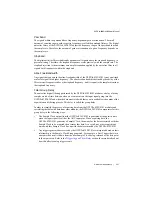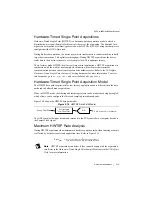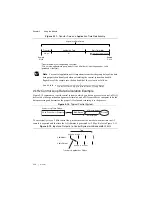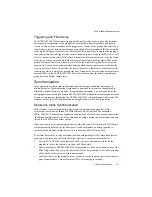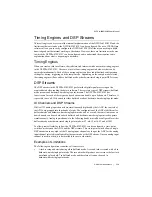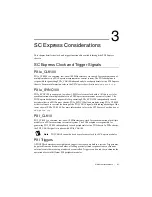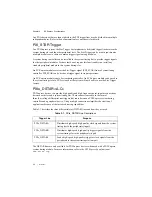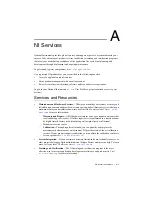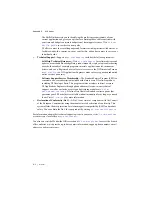
2-20
|
ni.com
Chapter 2
Using the Module
•
A task is set up and started using ai0 in buffered mode. A second task is created with ai0
also in buffered mode. The second task will produce an error since the first task is already
using ai0.
•
Four buffered mode tasks are setup and started, each with a single and different ai channel
and operating at different sample rates. A fifth task is created. The fifth task will produce
an error, regardless of how it is configured, since the first four tasks are using the
four timing engines, one per task.
•
A buffered mode task is setup and started using ai0:24. A second buffered mode task is
created using ai25. The second task will produce an error since the first task has 25 total
channels and therefore must use all four buffered mode streams; each stream can handle
only eight channels. There is not an unused buffered mode stream available. If the second
task was set for hardware-timed single point mode, an error would still be produced by the
second task since ai24 in the first task has forced ai24:ai31 to all be buffered mode
channels.
Accessory Auto-Detection
SC Express modules automatically detect compatible accessories or terminal blocks. The RSVD
pins on the I/O connector provide power to the accessories as well as digital communication
lines. This allows software to detect when accessories are inserted or removed. In addition,
software can automatically identify the specific terminal block as well as access any calibration
or scaling information associated with the terminal block.
MAX allows you to see which accessories are currently connected to your module. In MAX,
expand
Devices and Interfaces
and locate your module. If a terminal block is connected to your
module, it will be displayed beneath the module. Unsupported terminal blocks appear in MAX
with an X next to them.
NI-DAQmx property nodes can be used to programmatically access information about
connected accessories in your application. Refer to the
NI-DAQmx Help
for documentation
about programmatically accessing accessory status.






